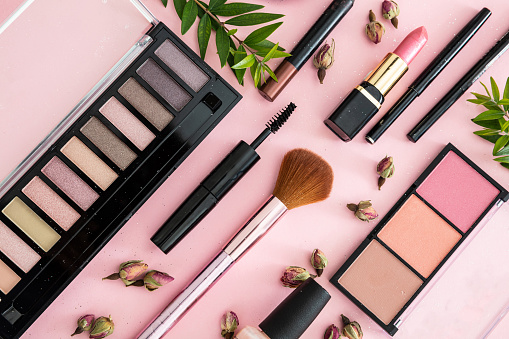How Are Cosmetics Made?

Make up natural cosmetics flat lay. Lipstick and nail polish, eye shadows and blush, brushes, pencils and rose buds against pink color background.
Currently, cosmetics are made globally in a specialized industry dominated by a few corporations. While most of these companies were created around the turn of the 20th century, the number of distributors and stores offering these cosmetics continues to increase.
This is an intriguing issue that is always on the minds of many consumers. In addition to the fact that most people use them daily, their costs differ greatly. It is not unusual to encounter a selection of cosmetic products with identical functionality but vast price differences. It is necessary to examine how these things are manufactured to comprehend the explanation for these differences.
1. Ingredients
Cosmetics are composed of various components, including oils, dyes, and other pigments. Although most cosmetics are heavily regulated, the degree of safety and care that goes into their production varies greatly depending on the country you purchase them from. Oils and waxes are important components of cosmetics such as lipsticks, mascara, and waxes. These ingredients serve a crucial part in a variety of cosmetics. In the case of creams, for instance, they keep the skin’s natural moisture from evaporating.
One of the essential components of cosmetics is color. In some cosmetic items, color plays a crucial role in their ability to conceal or enhance the face. A broad range of natural and synthetic pigments have historically been used to create diverse hues. There are some unusual substances among them.
2. Powders, Bases, and Blush
Like lipstick and mascara, the foundation of many other cosmetics is oils and pigments. Since the odor of the base substances alone may not be desirable, fragrances are added to certain of them.
As the popularity of organic cosmetics increases, firms include more natural and eco-friendly components into their face makeup formulations. Numerous powders, foundations, and creams like lanolin hand cream are formulated with sensitive skin in mind, so you may buy products without examining the chemical list beforehand. Lastly, animal testing has recently been a problem, pushing cosmetics companies to discover other methods to assure the product’s quality and safety.
3. Mascara
Although there are other methods to produce mascara, the emulsion approach is the most cost-effective for businesses. In this manner, water and specific thickeners are combined to make a cream-like basis.
Ingredients vary greatly. Regardless of which materials are utilized, it is then combined with wax and melted. The slurry is then tinted using pigments to get the desired hue. The mixture is then cooked for many hours to create the best combination of the various components. This mixture is then placed in containers for packing and chilled. They are then tagged and sent to various locations throughout the globe.
4. The lipstick
The first step in making lipsticks is to create a foundation mixture. This combination comprises oil, wax, and alcohol, and it is homogenized and made smooth by machines. Then, a different pigment is added to each portion of this mixture, depending on the range of colors desired.
Finally, it is put into tube-shaped molds responsible for lipstick’s classic shape. When these molds are retrieved from the freezer, they already have the desired form and consistency.
5. Cosmological tests
Cosmetics are very sensitive items because of their interaction with the skin, hair, mouth, and eyes. To guarantee that they do not pose harm to human health, they must first undergo extensive testing in a laboratory before being released into the market.
Animals have been subjected to these experiments for decades. This has protected humans from experiencing the potentially bad effects of the items but has exposed many tiny and delicate animals to these dangers. However, due to the advocacy of animal rights organizations, cosmetic testing on animals has been prohibited in several nations. As a result of these prohibitions, many businesses now adopt other ways to assure the safety of their goods.
Before applying cosmetics to your face, it is essential to inquire about their composition. This page has provided you with a list of companies that ethically produce their cosmetics and the most common substances found in makeup. Priority should be placed on the product’s quality while gaining knowledge of various cosmetics manufacturing processes. Choosing cosmetics from firms that spend much on research may enormously impact their efficacy.



